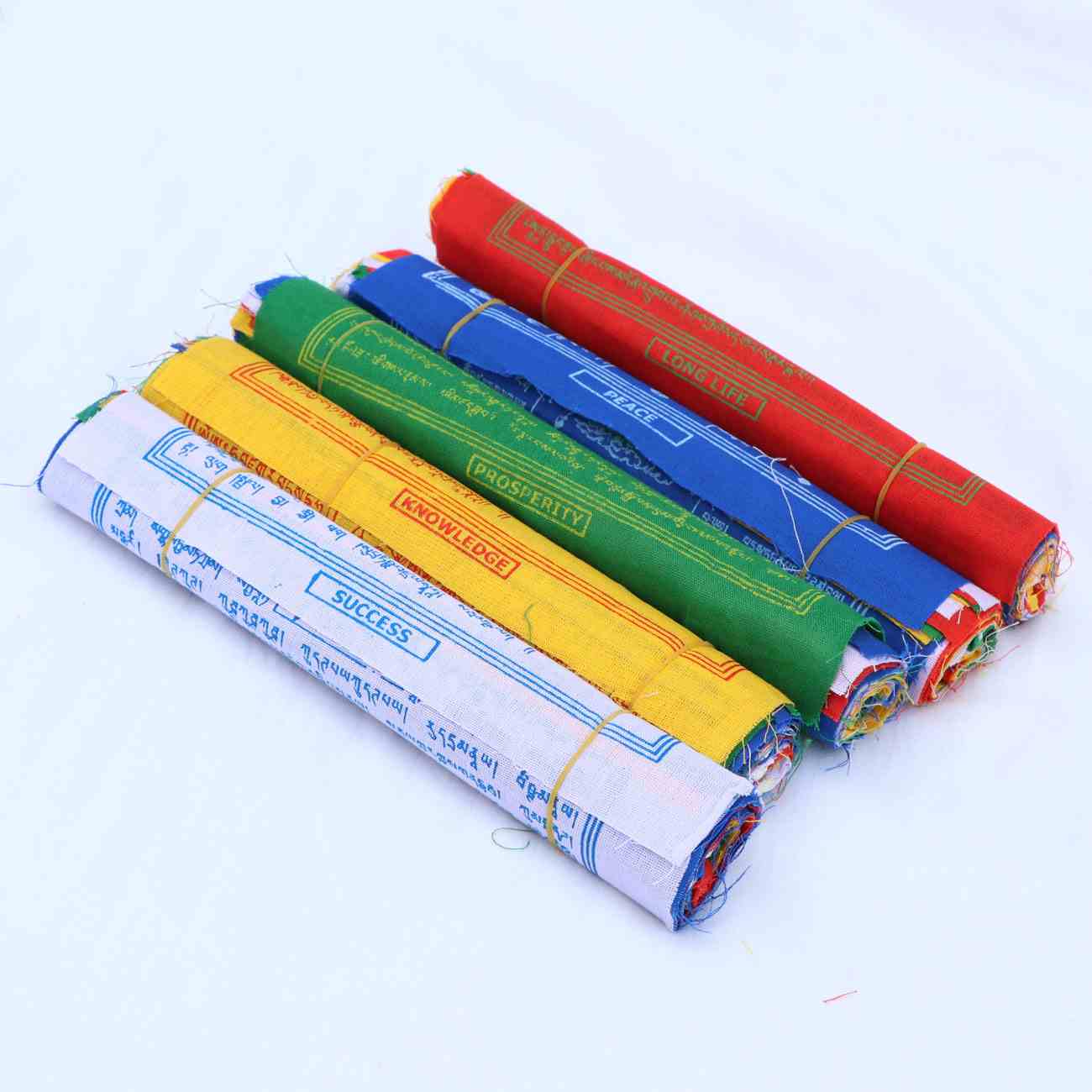What do you think of when you see colorful Tibetan prayer flags? Most of you probably think it’s something cultural- and you won’t be wrong to think that. The aspect of hanging prayer flags is indeed cultural and religious. However, there is a deeper meaning and process to hanging this colorful piece of cloth, filled with messages and blessings of peace. The question here is, how to hang prayer flags, and what does it signify?
Well, this is exactly what we are here to answer. In this blog, we answer the question of how to hang the prayer flags. Along with this, we also discuss various significances of prayer flags as well. So, without any further ado, let’s get started.
What is the significance of Tibetan Prayer Flags?

The Tibetan Prayer flag is filled with rich symbolism and significance. In fact, you can easily find a connection with Buddhism if you take a simple look beyond the scribblings and colors of the flags. You don’t even have to go that far. The color and the writings of the prayer flags themselves have deep significance. So, what are these significance?
The key significances of the Tibetan Prayer Flags are as follows:
Color Symbolism of Tibetan Prayer Flag
As mentioned prior, the color of these flags is significant in and of themselves. These prayer flags come in six colors, and each of these colors has its own significance. The six colors of prayer flags and their significance are as follows:
Blue or Green
In Buddhism, both blue and green represent the same thing, at least when it comes to the prayer flags. These colors represent the sky, space, and wisdom.
White
This color symbolizes air. Along with this, it also represents purity and spirituality.
Red
In Tibetan Buddhists prayer flags, Red is the symbol of fire. This color also represents the life force. Furthermore, Red is also a colorful representation of the transformation of one’s mind, body, spirit, and speech.
Yellow
This color is regarded as the color of the earth. It represents knowledge and balance.
Black
Although black is generally regarded as the color of evil and darkness, in Buddhist prayer flags, it represents positive aspects. Black is the color of healing and comfort in these flags.
These are the six colors of these flags and their significance.
Mantras and Prayers
These flags are adorned with various mantras associated with various deities. The significance of the prayer flags significantly changes depending on the mantra and the associated Buddha. Some of the most common mantras and prayers in these flags are as follows:
- Tibetan Mantra
- Newari Mantra
- Green Tara Mantra
- Guru Rinpoche Mantra
- Gautama Buddha Mantra
- Medicine Buddha Mantra
Besides these, the mantra in these flags can be associated with any of the known and unknown Buddhas.
Direction of Hanging Prayer Flag
The significance behind the color and mantras can easily be seen. However, did you know that the direction of the hanging also affects the significance of the Tibetan Prayer Flags? These flags are hung from left to right in the direction of the sun. This allows the blessings within these flags to be carried out by the wind from east to west. This symbolizes the spreading of positive energy.
Other significances
Besides the ones we mentioned, there are several other significances of these prayer flags. Some of these significances include the following:
- Harmony and balance
- Spreading of the blessings
- Cultural identity
In other words, the Tibetan prayer flags are more than decorations. They have deep significance, which often depends on several factors.
Styles of Prayer Flags

Now that we know the significance of these flags, we are ready to discuss how to hang the Tibetan prayer flags. However, before we talk about this aspect, we still have to cover a small detail – that is, the types of prayer flags. There are two primary types of Tibetan Prayer flags. They are named rLung rTa (pronounced as Long Ta) and Darchog.
rLung rTa
In Tibetan culture, rLung rTa means wind horse. The flags named after this come in small square or rectangular shapes and are attached to the string at the top. Furthermore, when hung, these flags are diagonally hung from low to high end. The low ends used in this flag are rocks, and the high ends are the top of the stupas. This is a horizontal prayer flag.
Darchong
Darchong is a large rectangular vertical prayer flag. They are attached to the poles and are used directly on the ground or in cairns.
How to hang Prayer Flags?

Now that we have covered the types and significance of Tibetan prayer flags let’s talk about how to hang these flags.
To hang this religious and spiritual accessory, you should consider the following things.
Auspicious Time
Before you hang the prayer flag, you should consider the ideal time. For this, you can use the Tibetan calendar. Do note that in the Tibetan calendar, you can also find the inauspicious days as well. Some of the common auspicious times are as follows.
- Full Moon
- New Moon
- Solar Eclipse
- Lunar Eclipse
- Tibetan New Year
- Mondays and Fridays (with some special exceptions)
While there are specific auspicious dates, we cannot say the same for inauspicious days. The inauspicious days are generally considered to be the ones that possess the Baden entity. This is because Baden Senpo is a demon entity in this culture. For this, you can either check your Tibetan calendar or contact a guru.
Once you have considered these things, you can follow the process below to hang the Tibetan Prayer Flag.
- Find a secure anchor point.
- Attach the free end of the string to the anchor point
- Allow the flags to hang freely
- Ensure that the flags are hanging from left to right
- Treat the flags with respect and mindfulness, and avoid letting them touch the ground
These are the key aspects of hanging the prayer flags.
Conclusion
The Tibetan Prayer flag is one of the most iconic Tibetan accessories. Not only are they pretty to look at, but they also contain deep significance. Therefore, it is important to know how to hang prayer flags if you want to use these accessories. However, before you hang this flag, you should be well aware of the significance associated with this flag.
In this blog, we covered some of the key aspects of prayer flags, including the types, significance, and aspects of hanging them. Therefore, we hope you found this helpful. If you want further insights into various aspects of religious and spiritual accessories, do check out some of our other blogs at Nirvana Mala, experts at handicrafts in Nepal. And as always, thank you for reading till the end.
FAQ on hanging prayer flags
Q: Can I hang prayer flags indoors, or are they meant for outdoor use only?
A: Yes, you can hang prayer flags indoors. Just make sure to choose a location that resonates with you, such as a peaceful and prominent spot and check the auspiciousness of the occasion.
Q: How do I properly dispose of old or worn prayer flags?
A: To dispose of the old or worn prayer flags, you should burn them with respect. Once you burn them, you should collect the ashes and bury them in a spiritually significant location.
Q: How do I ensure the flags are hanging in the correct orientation and order?
A: Prayer flags are hung from left to right and facing the east to west direction.

